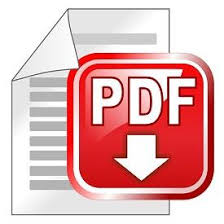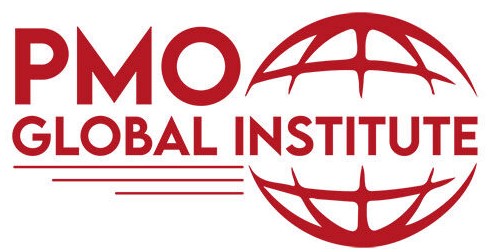Location:
PMKI > Organizations
& Governance > PMOs (Project, Program or
Portfolio Management Offices).


- Developing and Managing a PMO
- Setting and using performance
targets
- Enterprise PMOs
- Useful External Web-links &
Resources.
Other related sections of the PMKI:
PMOs are organizational entities responsible for aspects of the support and monitoring of projects and programs within their area of responsibility:
WP: PMOs (Project Management Offices). The different types of PMO and the functions they may perform.
PP: Establishing an Effective Project Office – The Core Requirements for Success. The implementation of a PO is a long–term project in itself. There are a multitude of considerations that can impact on the pace and scope of the PO service eventually developed. A summary of the requirements is as follows:
This paper outlines the stages, processes and supporting systems architecture required to create and support a successful Project Office..
PP: Supersizing PMO Performance. The value of an effective PMO to its host organization has been demonstrated repeatedly. Yet in many organizations the PMO is perceived to be ineffective or irrelevant and as a consequence its potential to contribute value to the organization is ignored. In some circumstances this perception may be valid with the PMO having been set up as an administrative bureaucracy designed to gather and process data blindly. However, the same perception is frequently encountered in organizations where the PMO has been staffed with competent practitioners skilled in the techniques of project management and project controls. In this circumstance the failure is not attributable to the technical competence of the PMO staff; rather their failure to communicate effectively and manage relationships.
A relationship focused PMO understands the need to communicate effectively with its different stakeholders, in appropriate language, to facilitate access the information it needs and to have its reports and messages understood and acted upon. The relationship focused PMO is trusted and relied on by both project teams and senior management, acting as an effective cultural translator between the two groups. By understanding its stakeholders and customizing its communication strategy to meet their different requirements, the PMO transforms their perceptions from being seen as an 'administrative overhead' into a valuable resource.
This paper outlines a number of techniques and tools,
including the Stakeholder Circle® available to
PMO management to facilitate the transition to a
relationship focused organization delivering 'supersized
value'.
Chinese
language version.
Prs: Designing a PMO
to Succeed and Survive. To survive, a PMO
requires executive sponsorship, management buy-in and a
clear mandate (authority and autonomy). To be successful,
the PMO should contribute to the strategic alignment of
projects and programs, and a core component in the
organization's governance of its projects and programs.
Achieving this requires a clear understanding of the PMO's
stakeholders and the organization's objectives. PMOs need
to be more than administrative ‘police’, they can add
significant value in the strategy and relationship areas
of the portfolio by focusing and supporting:
- Strategic alignment of projects and programs
- Benefits realization
- Providing leadership in implementation of
standards
- Managing continuous improvement
- Becoming the information Manager, facilitating open and
targeted communications:
- Between the various levels of the PMO
(project, program and portfolio)
- Between the PMO and organization executives
(summary reports, dashboards, etc), and
- Between project and program management
(health checks, performance metrics, Earned Value, etc).
Prs: Stakeholder Engagement: Practical Insights for Advanced PMOs. Stakeholder engagement from a PMO perspective. This presentation offers some practical insights into the actions that advanced PMOs must take to develop a reputation of credibility and competency through managing the relationship with senior stakeholders: influencing decisions, managing resistance to change, and providing a central support structure for stakeholder engagement practices within the organization.
A PMO is essential to the sustainable success of any organization that uses project and program management to achieve its business strategy. To be effective the PMO must develop a structure and mode of working that best meets that organization's needs. Thus, the PMO structure and mode can be any position along a continuum from a supporting role where it is seen as a ‘servant’ of senior management, or for more advanced PMOs, where it is regarded as ‘partner’ and the PMO team advises on governance and steering of the projects and programs in its domain in addition to its support role.
Whatever its function in the organization, the PMO plays a key role with regard to stakeholder engagement. The PMO team needs to ensure that it understands who its stakeholders are and which stakeholders are important to its success. Successful engagement of these key stakeholders raises the profile of the PMO as a competent and credible partner of senior management. The PMO is also best placed to be the central repository for the promotion of effective stakeholder engagement practices in the organization.
A structured methodology applied consistently helps the PMO to understand a dynamic stakeholder community and to engage stakeholders through appropriate communication. The Stakeholder Circle methodology is one such methodology that not only assists in understanding who the key stakeholders are but also guides the team in developing effective communication and measuring its effectiveness.
Effective communication is focused on building credibility with all stakeholders. A particular focus on advising upwards ensures that the PMO team builds a reputation as competent and trustworthy, that they can influence good decisions and are consulted as partners to ensure good functioning of the organization.
Successful PMOs create a reputation for competency and for credibility. Competency requires skills in the domain of portfolio, program and project (PPP) - the data to be communicated has to be good, accurate and timely. Credibility is achieved through building and maintaining sustainable relationships with PMO stakeholders and through communication that builds trust. Trust is built and reinforced through the provision of useful and usable information to stakeholders to assure them that the PMO understands their needs and strives to deliver to those expectations.
Blg: Prediction is very difficult, especially about the future. The questions posed in this post is how accurate do we need to be with our projections to be useful? And how do we persuade managers to make use of the predictions?
WP:
Valuing Stakeholder Management
Stakeholder Engagement is free! This White Paper sets out
the zero cost of stakeholder relationship management,
based on the philosophy of the Quality movement that
quality is free – investment in stakeholders is balanced
by reduction in ‘failure dollars’ of fixing the issues
caused by poor stakeholder relationship management. A
properly equipped PMO is ideally placed to champion and
facilitate this approach and provide not only support
services to achieve this, but also assist in measuring
‘failure dollars’ through its reporting mechanisms.
KPMG surveys analyzing the benefits of mature Project Offices are available for download. These papers are copyright KPMG:
PriceWaterhouseCooper's surveys are also available for download. These papers are copyright PriceWaterhouseCooper.
PMI's Thought Leadership reports focused on strategic PMOs. These papers are copyright PMI.
Click through for our papers on achieving project success (part of benefits realization and value).
Blg: Designing effective KPIs. The practical challenges of creating effective KPIs that drive desired behaviours.Art: Ask for information you can use. If you are not careful, the easy to measure drives out the harder to quantify, even when the latter is more important.
Art: ‘Not knowing’ is no longer an option. Effective governance and management requires timely access to ACCURATE information.
WP: Proactive Project Surveillance. The notion of surveillance begs the question, “What do you watch?” This paper describes the various forms of surveillance from audits to reviews.
WP: Measuring Project Performance - Gateways and Scorecards. A practical look at Gateway Reviews (Stagegates) and Balanced Scorecards in the control of projects.
Art: Assurance for high risk projects. High-risk, high reward projects that have the potential to transform an organization require a robust, independent assurance function!
Art: Three Steps to Validate a Variance. Variances are to be expected, but before taking action to bring performance back into alignment with the plan, it is a really good idea to make sure the variance you are seeing in the control systems is real and significant.
Art: Performance Management. The importance of developing a culture of high performance.
Art: Measuring Culture. The culture of an organization or team is a key determinant of success and an important measure of effective governance - this article suggests ways to measure culture.
Art: What you measure is what you get! Asking the wrong questions and gathering the wrong data can easily be the cause of undesirable outcomes; care is needed!
Blg: A thought on PMOs and Project Controls. The quality guru W. Edwards Deming said ‘In God we trust, all other bring data’. However, recent developments in the Victorian Government health system offer a salient reminder to any PMO manager on the value of data
Art: Lessons for PMO managers from the CBA scandal. The CBA financial scandal was a classic example of the effect of setting the wrong performance targets. If your measurement systems focus on the wrong things, you will get exactly what you asked for!
Strategic initiatives are essential to success in today's increasingly complex business world, yet 44 percent of initiatives fail in implementation. Our series reveals the critical role of PMOs: to serve as enablers of strategic change in any organization.
Blg: Organizational Governance and Project Controls This post looks at the two way responsibility for providing ACCURATE controls information to the organizations directors. Before making use of project controls information the directors are legally required to have reasonable grounds to believe the officers and employees providing the information are reliable and competent people, and the director has made an independent assessment of the accuracy of the information. Conversely, the officers and employees who ‘make available or give information, or authorizes or permits the making available or giving of information’ to a director that relates to company affairs can be prosecuted if they have not taken reasonable steps to ensure that the information is complete, accurate, and is not misleading.
Prs: Stakeholder Engagement: Practical Insights for Advanced PMOs. Some practical insights into the actions that advanced PMOs must take to develop that reputation of credibility and competency through managing the relationship with senior stakeholders: influencing decisions, managing resistance to change, and providing a central support structure for stakeholder engagement practices within the organization.
Read PMI's 'thought leadership' publications on strategic PMOs
Best Management Practice products, UK Government
(formally OGC, now Axelos) - the umbrella site dedicated
to making access to information quick and easy - https://www.axelos.com/
- P3O - Project Offices: https://www.axelos.com/best-practice-solutions/p3o
 For papers on PMOs presented at the PGCS
Annual Symposium see:
For papers on PMOs presented at the PGCS
Annual Symposium see:
https://www.pgcs.org.au/papers/management-ppp/
 PMO
Global Institute Inc is a global certification body for
PMOs offering training, certification and software: https://pmoglobalinstitute.org/
PMO
Global Institute Inc is a global certification body for
PMOs offering training, certification and software: https://pmoglobalinstitute.org/